Haiti earthquake anniversary: WFP continues help to communities
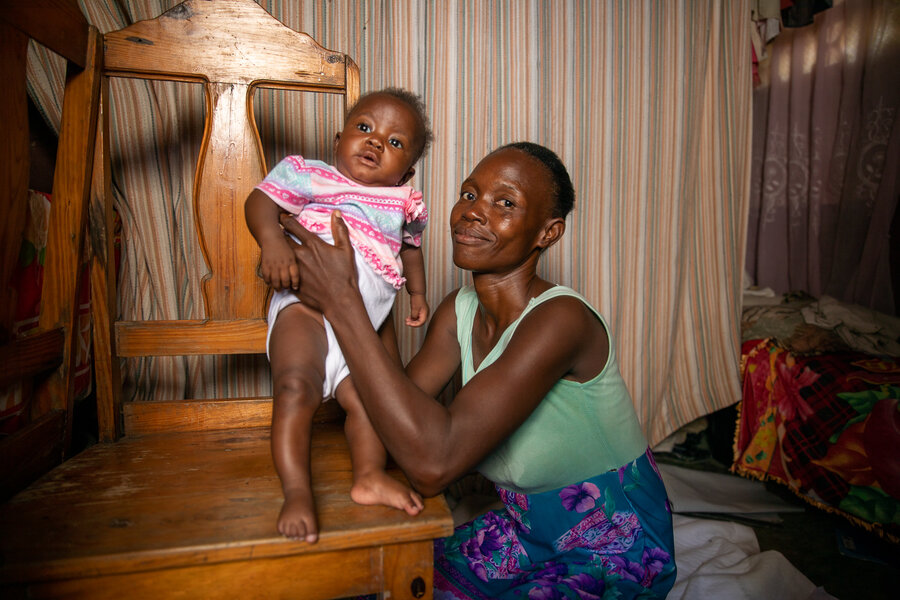
On 14 August 2021, a 7.2 magnitude earthquake struck the south of Haiti, killing 2,200 people and destroying 137,000 homes.
Marie was pregnant. When her house crumbled, she and her two daughters had to run and take refuge on an uninhabited piece of land which was turned into a site for displaced people that lost their homes.
They were among 26,000 people who fled their homes to find refuge in temporary displacement sites. “Living in a camp was not easy at all,” says Marie Marceleine, “We suffered a lot. I had nothing to eat, and we were very sad. I thought that our Haitian nation was cursed, we asked why it was us.”
They ended up staying at the displacement site for five months. “I slept on the floor and gave birth on the ground, I didn’t receive any care, but thanks to God I survived,” says Marie.
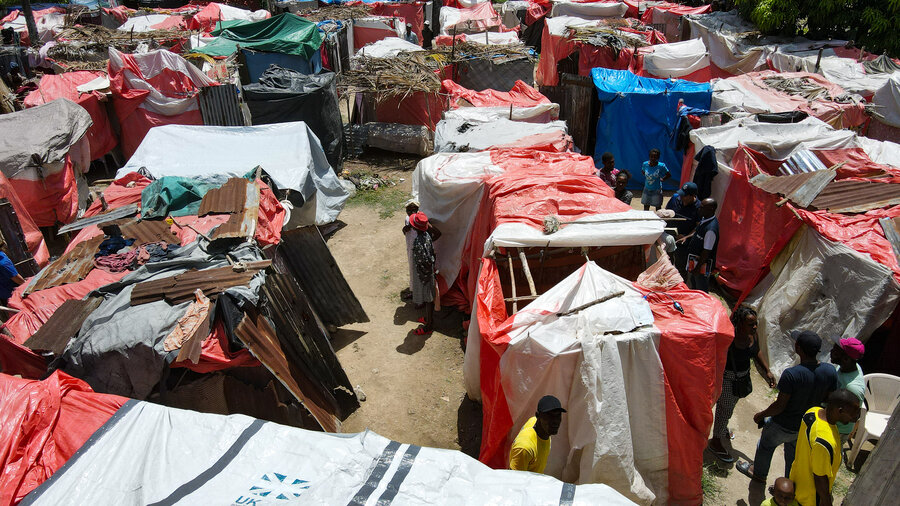
A few hours after the earthquake, the World Food Programme (WFP) teams were already on the ground to assist the victims. Apart from providing emergency hot meal assistance to people in hospitals and displacement sites, WFP worked with the government, the International Organization for Migration and other UN agencies, providing cash to displaced families that would allow them to settle in a permanent home again, and to cater for basic needs including food.
Marie is one of more than 330,000 people who have received emergency assistance from WFP after the earthquake.
When I meet Marie, she is living in her new home with her three daughters. “With the assistance I received, I was able to rent this house because the old one was completely cracked and I didn’t own it either. I also bought food supplies and basic necessities,” she says.
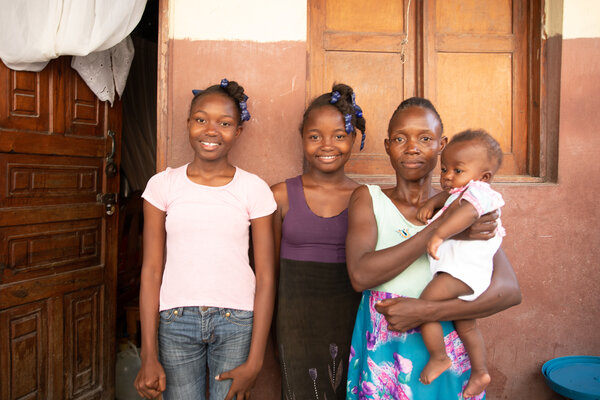
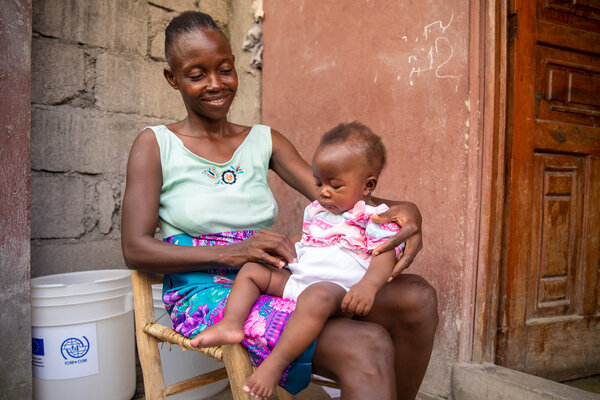
A year on from the earthquake, WFP continues to support communities throughout the three most affected departments, Grand Anse, Nippes and Sud. To ensure that food security levels do not deteriorate further, WFP works with the Government on several long-term initiatives.
Most say that the cash assistance they receive — under a social protection project that WFP implements with the Ministry of Social Affairs and Labour in Haiti — is used in part to reconstruct their homes.
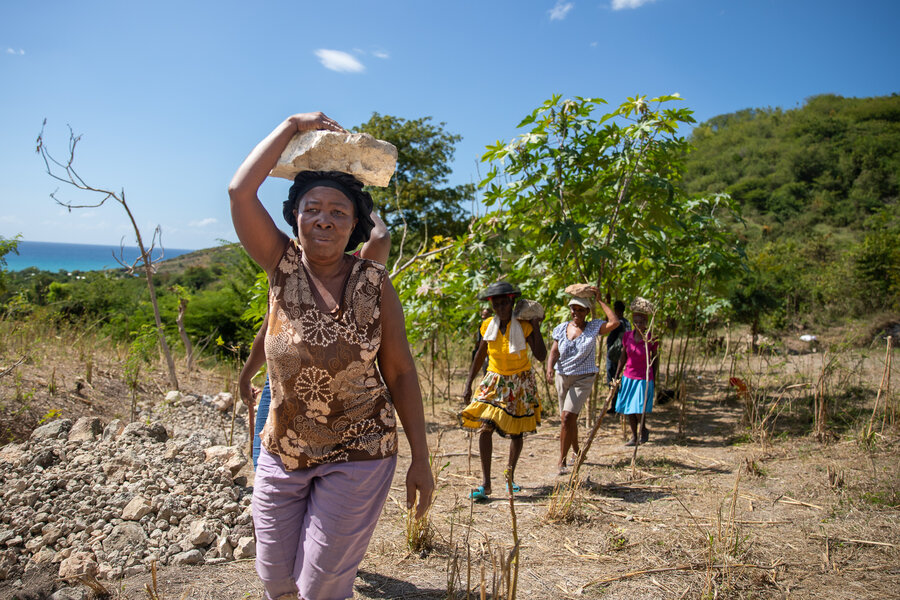
WFP’s resilience projects continue
A line of women carry rocks in the hands and on their heads as they descend to a gully on the side of a hill in Chardonnieres in southern Haiti. The rocks will help build barriers to slow down the flow of water across this verdant valley and prevent the erosion of land that is important to this rural farming community.
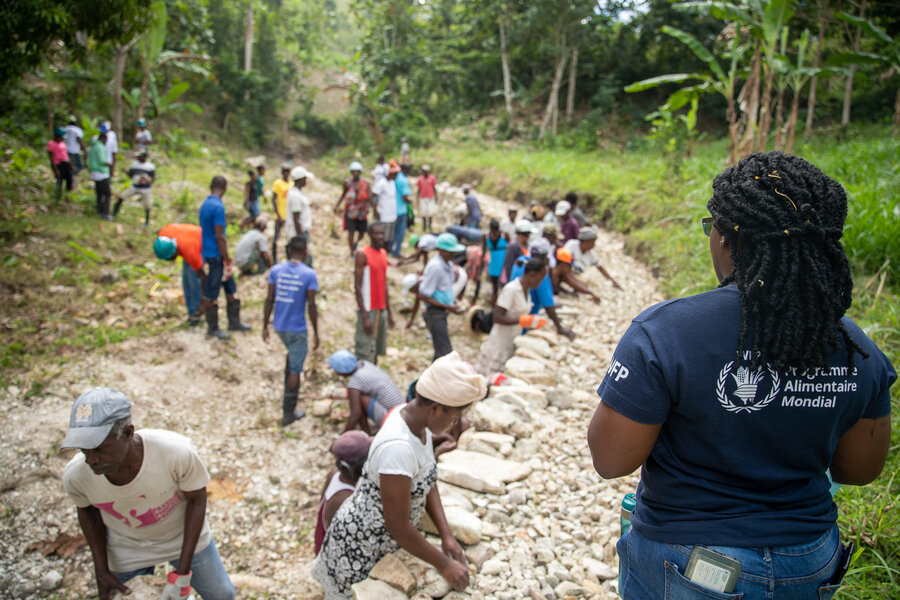
Just down the valley, another team is working hard at clearing the road as part of a rehabilitation programme. Both groups are part of WFP’s resilience project that aims to create infrastructure on community level like the rehabilitation or reconstruction of roads, trails, bridges; or through implementing reforestation and agriculture projects. All initiatives are identified by the community, based on their biggest needs. At the same time the participants receive cash assistance to improve their livelihoods.
“The money people have earned is important in the short-term to get them through the difficult post-earthquake period,” says WFP’s Programme assistant Sophia Toussaint, ‘but it’s also crucial to their longer-term future. Protecting the hillside stops soil erosion and means farmers are less likely to lose their crops in a natural disaster; having a good road allows produce to be more easily sent to market,” she says. “It also means that aid can be delivered more effectively, and people can get to hospital if there is another earthquake.”
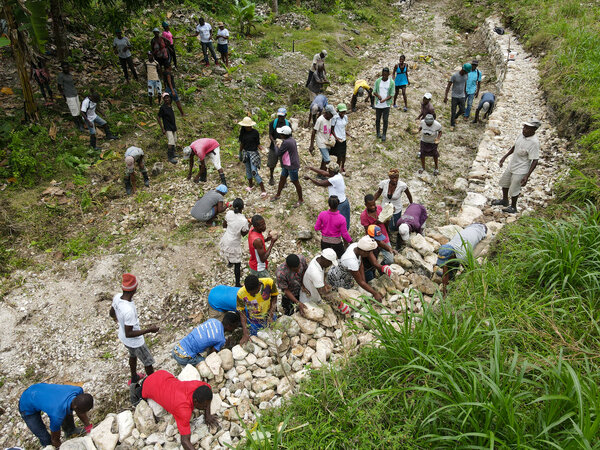
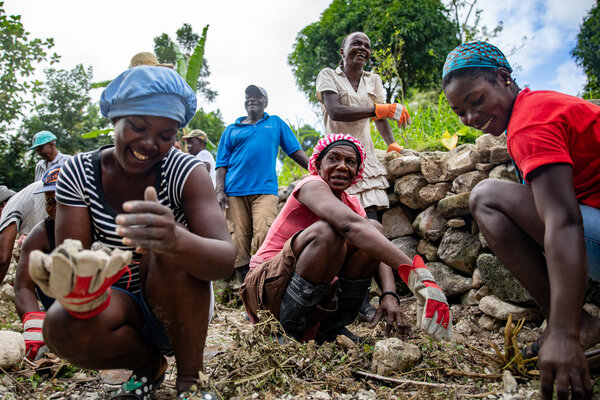
WFP’s emergency assistance after the earthquake was funded by Andorra, Canada, ECHO, France, Germany, Haiti (through the World Bank and the Inter-American Development Bank), Japan, Latter Day Saints, Organisation Internationale de la Francophonie, Switzerland, UNCERF, United Kingdom, United States and the UPS foundation while its resilience activities were funded by Canada, South Korea, Switzerland and the United States.
WFP’s Social Protection projects are funded by Haiti through the World Bank and the Inter-American Development Bank, and Switzerland in 2022.
